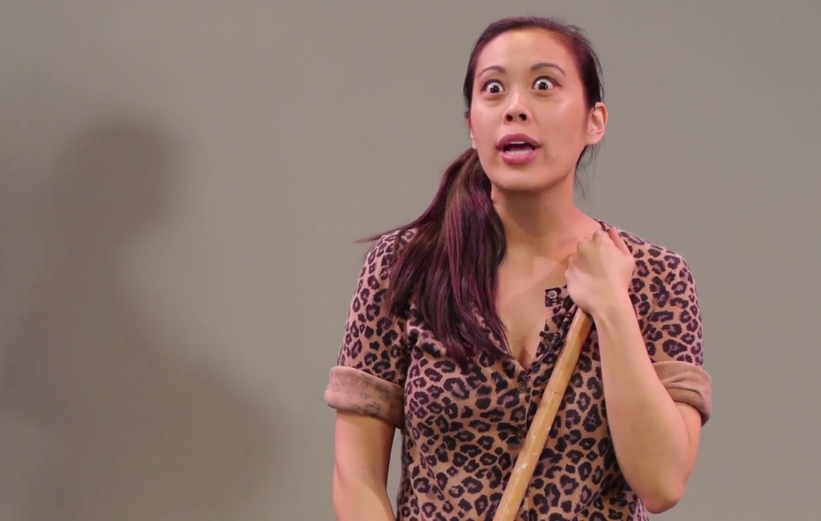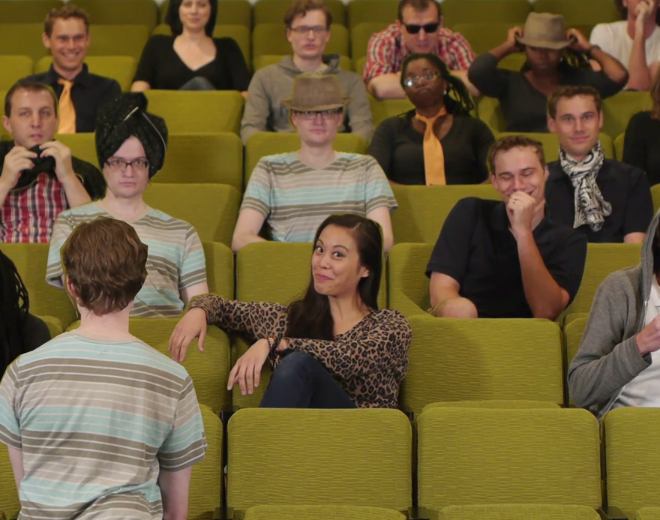Those Actors Can SEE YOU!
Most of the time, you only notice The Fourth Wall when someone breaks it.
Imagine a play set in someone’s living room. The scenic designer wants to create the suggestion of a realistic interior, so she starts with a wall far upstage, away from the audience. She adds two additional walls, stage left and stage right, that come out towards the spectators. That makes a box with three walls, thus creating the desired illusion of a room. Now, most real-life rooms—like the one you’re probably sitting in now—are rectangles with four walls. Our hypothetical stage set has only three, because how else would you see the performers?
Sometimes when you watch a play, the characters seem to be interacting with one another without knowing that you, the audience, are watching. As a theatregoer, you get to spy on a scene as if there were a semi-transparent barrier between you and the performers. You can see them, but they can’t see you. That’s the idea of the “fourth wall.” It’s a convention, a shared metaphor that the audience and performers allow themselves to believe in.
But like all conventions, this one is made to be toyed with, or even shattered. When a performer acknowledges the audience by, say, speaking directly to them, he or she is said to be “breaking the fourth wall.” A narrator does this all the time, by definition.
That’s slightly different from an aside or a soliloquy in classical theatre (e.g., Shakespeare), when the character verbalizes something that we can hear but the other performers can’t. By contrast, these devices traditionally keep the performer within the universe of the play—say, Ancient Rome (Julius Caesar) or imaginary Verona (Romeo and Juliet).
Many kinds of theatrical performance do away with the fourth wall entirely. But in realistic drama, breaking the fourth wall can be fun and even thrilling. A character might confide in the audience by letting you in on a joke, or sharing a piece of knowledge that the other characters don’t have. A performer can suddenly start speaking to the audience as herself, not the character she plays. An operatic diva might pause for applause and take a bow after making a grand entrance, or finishing a spectacular aria. The film or television version of the fourth wall disappears when, for example, someone unexpectedly turns and speaks right into to the camera rather than to the other characters.
A play can also have a character remind an audience that what they’re seeing isn’t real. For example, think of a villain about to deliver a fatal blow who pauses to proclaim, “If this were a play, the hero would rescue you just in the nick of time!” That’s a subtle way to break the fourth wall by winking at the audience and having fun with the distinction between “theatre” and “reality.”
— Ben Pesner
This video was made by Theatre Development Fund, and it was filmed on location at the TKTS booth in Times Square.
Here’s the team:

